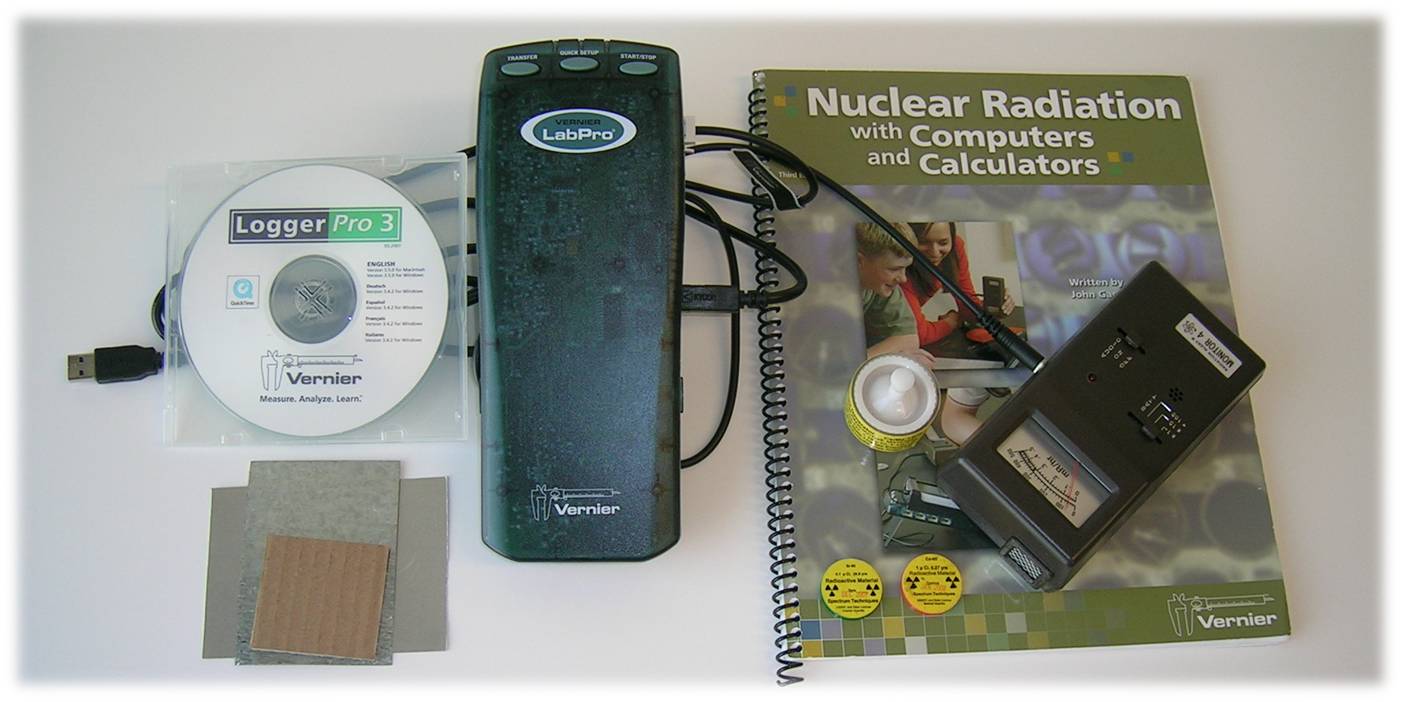Resources for Your Classroom
Career Information
Learn about careers in radiation safety—protecting people and the environment from the harmful effects of radiation while helping all of us benefit from the useful application of radiation science.
Radiation Science Instrumentation and Radiation Sources
- The HPS Radiation Instrument Kit is a collection of equipment and materials loaned to teachers for basic radiation science demonstrations and laboratory exercises. Teachers may sign up using the Radiation Instrumentation Kit Request Form. (This form must be opened up in Adobe Reader in order to fill it in using your keyboard.) When receiving the kit, please refer to the instructions for unpacking, use, repacking and shipping.

- Vernier Software & Technology produces simple-to-use and inexpensive computer-based equipment for basic nuclear science experimentation. A laboratory manual is available, providing teachers with ready-to-use instructions.
- Spectrum Techniques provides inexpensive radiation sources for use in the classroom. Refer to the listing for exempt sources.
- Oak Ridge Associated Universities provides a listing of the operating and maintenance manuals for a wide variety of civil-defense radiation survey meters.
- Instructions for modifying a surplus civil-defense Geiger-Mueller counter allows the analog survey meter to be converted to a digital counter with audio output.
Safety of Radiation Sources in the Classroom
Guidance for the Use of Exempt Quantities of Radioactive Materials in the Secondary School provides guidance on using radiation sources safely in elementary and secondary classrooms.
Demonstrations and Classroom Activities
- Irradiated salt demonstration. Did you receive a sample of gamma-irradiated salt from a member of the Health Physics Society? Read the full instructions for using the salt to demonstrate thermoluminescence.
- Calculate your annual radiation exposure activity. Use this calculator from the US Environmental Protection Agency to estimate the amount of radiation you're exposed to during a year.
- Calculate your annual radiation exposure activity. Use this calculator from the American Nuclear Society to estimate the amount of radiation you're exposed to during a year.
- Radioactive decay simulation using candy. This radioactive decay activity from the Science Education Resource Center at Carlson College uses candy as a surrogate for radioactive material.
- Radioactive decay simulation using pennies. This activity from the Science Education Resource Center at Carlson Collegeleads students through an activity using pennies to explore the concept of radioactive decay.
- Half-Life: A Classroom Exercise. This activity includes a lot of background about the theory of radioactive decay and was developed by a university professor and radiation safety professional.




